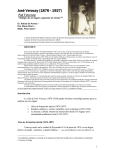Download Reticon LC3000 Series Instruction manual
Transcript
Digital Imaging LC3000-Series Camera Instruction Manual I N S T R U C T I O N Imaging M A N U A L PerkinElmer Optoelectronics 2175 Mission College Blvd. Santa Clara, CA 95054 Tel: 408-565-0830 Toll Free: 800-775-OPTO (6786) Fax: 408-565-0703 E-Mail: [email protected] http://www.perkinelmer.com www .perkinelmer .com/opto 055-0458-MAN Rev. C Copyrights, Patents and Trademark Credits PerkinElmer, the PerkinElmer Logo and the stylized P are trademarks of PerkinElmer, Inc. Reticon is a registered trademark of PerkinElmer, Inc. Warranty Seller warrants that the article to be delivered under this order will be free from defects in material and workmanship under normal use and service for a period of one year from date of shipment. The liability of Seller under this warranty is limited solely to replacing or repairing or issuing credit (at the discretion of Seller) for such products that become defective during the warranty period. In order to permit Seller to properly administer this warranty, Buyer shall: (1) Notify Seller promptly in writing of any claims; (2) Not open the camera cover as there are no user serviceable parts inside. (2) Provide Seller with an opportunity to inspect and test the products claimed to be defective. Such inspection may be on customer's premises or Seller may request return of such products at customer's expense. Such expense will subsequently be reimbursed to customer if the product is found to be defective; and (3) Shall not return any product without prior return authorization from Seller. If a returned product is found to be out of warranty or found to be within the applicable specification, Buyer shall pay an evaluation and handling charge, in addition to possible repair and/or replacement costs. Seller will notify Buyer of the amount of said evaluation and handling charges at the time the return authorization is issued. Seller will inform Buyer of related repair and/or replacement costs and request authorization before incurring such costs. Buyer shall identify all returned material with Seller's invoice number, under which material has been received. If more than one invoice applies, material shall be clearly segregated and identified by applicable invoice numbers. Adjustment is contingent upon Seller's examination of product, disclosing that apparent defects have not been caused by Buyer's misuse, abuse, improper installation or application, repair, alteration, accident or negligence in use, storage, transportation or handling. In no event shall Seller be liable to Buyer for loss of profits, loss or use, or damages of any kind based upon a claim for breach of warranty. The aforementioned provision does not extend the original warranty period of any article which has been repaired or replaced by Seller. SELLER MAKES NO OTHER WARRANTIES, EXPRESS OR IMPLIED, AND SPECIFICALLY, SELLER MAKES NO WARRANTY OF MERCHANTABILITY OF FITNESS FOR A PARTICULAR PURPOSE. PerkinElmer Optoelectronics ii Table of Contents 1 I NTRODUCTION ................................ ................................ ................................ ..............1 1.1 1.2 1.3 1.4 WHAT’ S I N THIS MANUAL ................................ ................................ ...................1 PURPOSE................................ ................................ ................................ ............1 PRODUCTOVERVIEW ................................ ................................ .......................... 1 FUNCTIONAL DESCRIPTION................................ ................................ ..................1 2 T YPICAL I NSTALLATION ................................ ................................ ................................ 3 3 RECEIVING AND I NSPECTING YOUR CAMERA ................................ .............................. 4 3.1 UNPACKING Y OUR CAMERA ................................ ................................ ................4 3.2 CUSTOMERSUPPLIED COMPONENTS................................ ................................ ....4 4 CAMERA OPERATION OVERVIEW ................................ ................................ .................5 4.1 CAMERA EXPOSUREM ODES................................ ................................ ................5 4.1.1 Master Mode................................ ................................ ............................ 6 4.1.1.1 Data Output................................ ................................ ..................6 4.1.2 Slave Mode................................ ................................ .............................. 6 4.1.2.1 Exposure Control ................................ ................................ ..........7 4.1.2.2 Slave Mode Data Output ................................ ............................... 7 4.1.3 Alt Slave Mode .1............................... ................................ ...................... 8 4.1.4 Alt Slave Mode .2............................... ................................ ...................... 8 4.1.4.1 Alt Slave Mode 2 Exposure ................................ ........................... 8 4.1.5 Line Period Limits................................ ................................ ....................8 5 I NSTALLATION G UIDELINES ................................ ................................ .......................... 9 5.1 OPTICAL INTERFACING................................ ................................ ........................ 9 5.1.1 Estimating the Working Distance ................................ ............................. 10 5.2 L ENS A TTACHMENT ................................ ................................ .......................... 11 5.3 M OUNTING THE CAMERA ................................ ................................ ..................11 5.4 CONNECTING POWER ................................ ................................ ........................ 12 5.4.1 Power Supply Requirements ................................ ................................ ....12 5.5 I NTERFACE CABLING ................................ ................................ ......................... 13 5.6 FRAME GRABBER I NTERFACEGUIDELINES ................................ ......................... 14 5.7 CLEANING THE SENSOR................................ ................................ .....................14 6 CAMERA SETUP................................ ................................ ................................ ............15 6.1 PREPARING FOR THEINSTALLATION ................................ ................................ ...15 6.2 I NSTALLING THE CAMERA ................................ ................................ .................15 6.2.1 Tripod Mounting................................ ................................ .....................16 6.3 A CTIVATING THE CAMERA ................................ ................................ ................17 6.4 CAMERA CONTROL ................................ ................................ ........................... 18 6.4.1 Camera Operating Mode Selection ................................ ........................... 18 6.4.2 Video Gain................................ ................................ ............................. 18 6.4.3 Video Offset................................ ................................ .......................... 19 6.4.4 Camera Powerup ................................ ................................ ....................19 6.4.5 Focusing the Camera ................................ ................................ ..............19 6.4.6 Verifying Camera Gain Control ................................ ............................... 19 iii PerkinElmer Optoelectronics 6.5 V ERIFYING SLAVE M ODE OPERATION ................................ ................................ 20 7 TARGET SPEED D ETERMINATION ................................ ................................ ...............21 7.1 TARGET SPEED ANDEXPOSURERELATIONSHIPS................................ .................21 7.2 SAMPLE IMAGING SETUP................................ ................................ ...................22 8 TROUBLESHOOTING ................................ ................................ ................................ .....23 8.1 TROUBLESHOOTINGCHECK L IST ................................ ................................ .......23 8.2 RMA (RETURN MATERIAL AUTHORIZATION)................................ .....................23 8.3 CONTACTING CUSTOMERSUPPORT................................ ................................ ....24 APPENDIX A I NTERFACE G UIDELINES ................................ ................................ .......25 A.1 RS-422 DIGITAL I NTERFACE................................ ................................ ..............25 A.2 V IDEO RECEIVER................................ ................................ ............................... 26 List of Figures Figure 1 LC3000 Series Camera Block Diagram ................................ ................................ ...2 Figure 2 Typical Machine Vision Environment ................................ ................................ .....3 Figure 3 Master Mode Timing ................................ ................................ .............................. 6 Figure 4 Slave Mode Timing ................................ ................................ ................................ 7 Figure 5 Imaging Geometry Definition ................................ ................................ .................9 Figure 6 Camera Front Face Attachment Point Definition ................................ ...................11 Figure 7 LC3000 Series Camera Mounting Hole Location ................................ ..................12 Figure 8 Test Target ................................ ................................ ................................ ...........17 Figure 9 Test Target Placement ................................ ................................ ........................... 17 Figure 10 Camera Control DIP switch Location ................................ ................................ ..18 Figure 11 RS-422 Digital I/O Circuit ................................ ................................ ..................25 Figure 12 Recommended Video Line Receiver Circuit ................................ ........................ 26 List of Tables Table 1 Table 2 Table 3 Table 4 Table 5 Table 6 Line Period Limit Definition ................................ ................................ .................... 8 Camera Sensor Array Lengths ................................ ................................ ..................9 RS-422 Connector Pin Assignment ................................ ................................ ........13 Camera Operating Mode Selection ................................ ................................ .........18 Video Gain Selection ................................ ................................ ............................. 18 Video Offset Selection ................................ ................................ ........................... 19 PerkinElmer Optoelectronics iv 1 Introduction 1.1 What’s In this Manual This manual describes the receiving, unpacking and inspection of your LC3000 series camera. Included is a operational overview that defines the camera operation and the controls provided. Guidance is provided for the installation, setup and initial operation of your LC3000 camera. 1.2 Purpose To provide machine vision system engineers and technicians a definitive guide for integrating LC3000 series cameras into their specific machine vision application. 1.3 Product Overview The LC3000 series cameras are designed for linear line scan image capture applications. 512, 1024 and 2048 pixel line scan image capture is offered at 10, or 20 megapixels/second depending on the camera model selected. Each camera uses a PerkinElmer P-series photodiode linear array with mm 14 pixel pitch at a 14 mm aperture. This provides a 54dB dynamic range over a spectral range of 350 to 1000 nm. All camera control functions are selected by corresponding DIP switches. Digital I/O is provided as differential RS-422. The video output is differential analog. 1.4 Functional Description The LC3000 series cameras incorporate high performance, high resolution line scan image sensors. (PerkinElmer Optoelectronics Imaging Systems parts RL0512PAG, RL1024PAG, or RL2048PAG) featuring pinned photodiode pixels. Each photodiode converts incident light into discrete charge packets that are converted to an analog voltage. The analog voltage is processed as a single channel sampled and held raster order analog video data signal. Analog processing circuitry provides adjustable gain and offset levels allowing the accommodation of unique lighting requirements. Figure 1 is a block diagram illustrating the major camera components. 1 PerkinElmer Optoelectronics Figure 1 LC3000 Series Camera Block Diagram PerkinElmer Optoelectronics 2 2 Typical Installation Figure 2 illustrates a typical machine vision installation showing the major system components and defines the coordinate system used throughout this manual. Figure 2 Typical Machine Vision Environment 3 PerkinElmer Optoelectronics 3 Receiving and Inspecting Your Camera 3.1 Unpacking Your Camera Inspect the received shipping container for any damage. If a shipping container shows visible signs of damage, it should be retained until all of the contents have been checked for completeness and absence of damage. Unpack the received shipping container and account for each item listed on the accompanying packing list. Visually inspect each item for absence of damage. In the event of damage, notify the shipper and the PerkinElmer shipping department. Retain all shipping materials for shipper inspection. Your first LC3000 shipping container in accordance with the enclosed packing list should contain the following: 1. LC3000 camera in static resistant envelope with unbroken seal. 2. Users Manual 3. Tripod Mount 3.2 Customer Supplied Components The following are components, not supplied with the camera, that are required for installation and operation of the camera in your particular machine vision environment. 1. Camera Lens + Extender (Available by contacting PerkinElmer) 2. Camera mounting hardware (Tripod mounting block included) 3. PC with Frame Grabber and digital I/O 4. Power Supply 5. Interface Cable (Available by contacting PerkinElmer) 6. Web illumination source 7. Web speed and light control. This is not a complete list of items that may be required for your specific application, but represents a minimum required to verify camera operation. Note: The majority of the customer supplied items are peculiar to each installation and may require custom fabrication. Guidelines for fabrication are provided in section 6.2 on page15. PerkinElmer Optoelectronics 4 4 Camera Operation Overview The camera operation is a 2 stage process that consists of exposure and data output transfer. This process operates the same regardless of mode. The only differences are the events that initiate exposure and data output transfer. The LC3000 series cameras offer 4 exposure modes for maximum flexibility to capture image data in a variety of applications. 4.1 Camera Exposure Modes The following exposure modes are provided: · Master Mode · Slave Mode · Slave Mode (Alt 1) · Slave Mode (Alt 2) The camera modes are selected by DIP switches accessible on the back of the camera. For a definition of mode selecting switch positions see section on 6.4.1 page18. Note: If the mode is changed while the camera is operating, the camera must be powered down and restarted for the mode change to take effect. 5 PerkinElmer Optoelectronics 4.1.1 Master Mode The master mode is a stand-alone operating mode that requires only DC power for operation. Master mode is selected on the bank of DIP switches on the back of the camera. For mode selection see section 6.4.1 on page 18 . Figure 3 Master Mode Timing The exposure time in master mode is determined by the line period that is fixed at N+41 clock cycles, where N is the number of pixels. See Table 1 on page 8 for line period definition 4.1.1.1 Data Output The analog video is output together with three synchronization signals: Camera Clock (CCLK), Line Enable (LEN) , and Camera Line Transfer (CLT). The falling edge of the internally generated CLT signal indicates the start of a line readout sequence and may be used by the user’s system for controlling strobes, shutters or other accessories. The LEN signal brackets the valid analog video that is output in synchronization with the CCLK. LEN goes high 1 CCLK period before the first valid pixel and goes low 1 CCLK period prior to the last valid pixel. 4.1.2 Slave Mode The slave mode allows the synchronization of the camera operation with a user generated master clock MCLK and a user controlled exposure period. Slave mode is selected on the bank of DIP switches on the back of the camera. For mode selection see section 6.4.1 on page 18. When operating in the Slave Mode, the user supplies LR (Line Reset), LT (Line Transfer) and MCLK (Master clock) signals. The MCLK may be selected between 20 kHz to the maximum clock rate allowed for the selected camera. In this mode, the camera output signals CCLK, CLT and LEN are synchronized to MCLK to assure a locked video output. For Slave mode timing, see Figure 4. PerkinElmer Optoelectronics 6 4.1.2.1 Exposure Control Slave mode camera exposure is determined by the LR and LT signals which must be timed with MCLK. The exposure time is defined as the time between the rising edge of the LR signal and the rising edge of the LT signal. The LR signal must be held active low (ON) for a minimum of 4 clock cycles and must be inactive high (OFF) for a minimum of 4 clock cycles prior to the LT signal rising edge. The LT signal must remain on (High) for at least 2 clock cycles and may remain ON until 2 clock cycles prior to the next line transfer. Because there are extra stages in the CCD readout register there must be at least N+41 MCLK cycles between successive LT commands. Figure 4 Slave Mode Timing 4.1.2.2 Slave Mode Data Output The data output timing in the slave mode is identical to that of the master mode taking note, however, that the CCLK, CLT and LEN signals are synchronized to the externally applied MCLK. Note 1. Since the camera electronics stores a video line in memory prior to sending it to the output, then when operating in the slave mode, the first line output after the first LT has been issued is not valid. Note 2. CCLK – Analog video data can be sampled or digitized using the falling edge of the CCLK signal, however the receive circuit propagation delays must be carefully managed in the systems design. 7 PerkinElmer Optoelectronics 4.1.3 Alt Slave Mode 1 Alt Slave Mode 1 operates similarly to the Slave Mode except that the camera operates on the internal camera clock CCLK (The basic camera model clock rate) while the exposure is determined by the externally applied LR and LT signals. There must be at least N+41 CCLK cycles between successive LT commands. 4.1.4 Alt Slave Mode 2 In Alt Slave Mode 2 the camera accepts a user supplied master clock MCLK and line transfer signal LT. The LR signal in this mode is ignored. 4.1.4.1 Alt Slave Mode 2 Exposure The exposure in Alt Slave Mode 2 is determined by the period of LT. There must be at least N+41 CCLK cycles between successive LT commands. 4.1.5 Line Period Limits Table 1 Line Period Limit Definition PerkinElmer Model # Pixels Clock LC3011 LC3012 LC3013 LC3021 LC3022 LC3023 512 1024 2048 512 1024 2048 10 MHz 10 MHz 10 MHz 20 MHz 20 MHz 20 MHz Optoelectronics 8 Max Line Scan Min. Line Rate Scan Period 18,083 L/sec 55.3 msec 9,389 L/sec 106.5msec 4,787 L/sec 208.9 msec 36,166 L/sec 27.6 msec 18,779 L/sec 53.2 msec 9,574 L/Sec 104.4 msec 5 Installation Guidelines The following guidelines are offered as an aid to permit the user for setting up the camera such that it can be verified for proper operation. Specific requirements are included only for items closely related to the camera operation. 5.1 Optical Interfacing The LC3000 series cameras require properly chosen lenses and lens extenders to allow the imaging of the chosen web width onto the sensor array. Table 2 shows the array length and number of pixels on the array for each camera model. Table 2 Camera Sensor Array Lengths Camera Model LC3011 LC3012 LC3013 LC3021 LC3022 LC3023 Active Array Length (AL) 0.28" (7.168 mm) 0.56" (14.336 mm) 1.13" (28.672 mm) 0.28" (7.168 mm) 0.56" (14.336 mm) 1.13" (28.672 mm) Active Pixels 512 1024 2048 512 1024 2048 Figure 5 Imaging Geometry Definition 9 PerkinElmer Optoelectronics 5.1.1 Estimating the Working Distance The following relationships assume a thin lens relationship that is deemed sufficiently accurate to permit reasonably accurate estimates of the optical configuration. Referring to Figure 5: ID = EXT + AF + f M = f = WD = AL ID = X WD WD * M M +1 f * ( M + 1) M Where: ID = Image Distance EXT = Length of Extender AF = Sensor to Camera Face distance f = focal length of lens AL = Length of sensor array X = Web with imaged M = magnification WD = working distance Since the actual results will vary from these idealized estimates, sufficient adjustment capability is required. Example Assuming that an 80 mm lens has been chosen for an LC30XX camera and is installed without an extender and that it is desired to image a 36” (882 mm) web. The following calculations result in the working distance estimate: ID = 5.8 mm+ 80mm= 85.5 M = AL 57.3 mm = = 0.065 X 882mm The estimated working distance then is: WD = PerkinElmer Optoelectronics ID 85.5 mm = = 1315.4 mm ( 51.8" ) M .065 10 5.2 Lens Attachment The LC3000 series cameras provide threaded mounting holes on the front face of the cameras to allow the attachment of custom lens adapters. The lens mount is a M42 x 1 (Pentax) thread. PerkinElmer can provide such optical components as lenses, C and F style lens adapters, extension tubes, and focusing systems. Figure 6 shows the location of mounting holes and registration holes for the attachment of custom lens adapters. Figure 6 Camera Front Face Attachment Point Definition 5.3 Mounting the Camera Camera mounting distance from the object to be imaged is determined by the required object width X, the camera array size and the selected lens and extension. See section 5.1 for some general guidelines for physically locating your camera for your application. Mounting the camera requires the supplied mounting plate or customer supplied adapter. Figure 7 shows the location of the mounting holes for attaching the camera to the mounting surface, specifies the mounting hole thread and defines the sensor optical distance setback AF (5.8 mm). The same mounting provisions are provided on each of the camera 4 sides. Note: To install the mounting plate you must remove the two phillips head screws first. These screws are reused to attach the mounting plate. 11 PerkinElmer Optoelectronics Figure 7 LC3000 Series Camera Mounting Hole Location Note: 5.4 For best thermal stability, mount the camera to a flat metal surface using the faceplate holes. Connecting Power Warning: It is the buyers responsibility to comply with all applicable code requirements. 5.4.1 Power Supply Requirements The power supply must provide at the camera: +11.4 to +25.2 VDC, 500 mA @ 12V DC PerkinElmer Optoelectronics 12 5.5 Interface Cabling The signal interface cable supports an RS-422 interface to receive the external LT, LR and MCLK signals and to output the LEN, CLT and CCLK signals. Additionally the cable connects power to the camera and provides the analog video output. Contact PerkinElmer for cabling options. Table 3 RS-422 Connector Pin Assignment Signal N/C N/C CCLK+ MCLKN/C N/C CLT+ LENN/C LR+ N/C VIDEOPOWER+ POWER RETURN MCLK+ CCLKLT+ LTCLTLEN+ N/C LRN/C VIDEO+ N/C Note: Pin 1 2 3 4 5 6 7 8 9 10 11 12 13 14 15 16 17 18 19 20 21 22 23 24 25 Description No Connection No Connection Camera Clock + Master Clock No Connection No Connection Camera Line Transfer + Line Enable No Connection Line Reset + No Connection Analog Video Input DC Power + Input Power Common Master Clock + Camera Clock External Line Transfer + External Line Transfer Camera Line TransferLine Enable + No Connection Line ResetNo Connection Analog Video + No Connection Always observe proper EMI shielding configuration if fabricating your own cable. See APPENDIX A for interface circuit guidelines. 13 PerkinElmer Optoelectronics 5.6 Frame Grabber Interface Guidelines The LC3000 series cameras have been designed for use with several brands of frame grabber. It is the users responsibility to select a frame grabber that is specific to the application being served and to provide any signal conditioning required to accept the differential analog video and support the RS-422 interface signals. When choosing a frame grabber, the following points must be observed: 1. Camera model (for number of pixels in sensor array). 2. Camera exposure mode. Slave modes require external input signals. See section 4.1.2 on page 6. 3. The frame grabber must be able to accept differential analog video. Contact PerkinElmer for a list of recommended frame grabber vendors. 5.7 Cleaning the Sensor Should the sensor become dirty the user can clean the face taking care to use Isopropyl Alcohol only. Caution: Do not allow any of the cleaning solution to contact any internal components, sensor pins or connector pins. Caution: Do not remove the cover over the sensor, or the faceplate. There are no user serviceable parts inside. PerkinElmer Optoelectronics 14 6 Camera Setup This section provides a generalized procedure for installing, configuring and activating your camera. Since every application is different, only suggested steps for a logical sequence to get the camera running are listed. It is assumed that you have familiarized yourself with the camera exposure and data output modes as described in4.1on section page5. 6.1 Preparing for the Installation It is assumed that you have defined and implemented a machine vision environment for your application similar to that shown in Figure 2. It is assumed that you have: 6.2 · Chosen a camera model and a lens. · Chosen a camera operating mode and a data output mode. · Selected a frame grabber. · Implemented an appropriate controllable target illumination source. · Implemented a target speed control system. · Designed and implemented an RS-422 (RS-644 for 30 MHz models) interface to accommodate the external input signals required for Trigger and Slave modes and the external clock specific to your application. See section 5.5 . · Determined the required cable lengths. Installing the Camera The following is a suggested sequence of steps to physically install the camera: 1. Contact PerkinElmer for recommendations on the frame grabber interface and for the required lens adapter. Attach the lens adapter to the camera and install the lens. For camera front face attachment points see Figure 6 on page12. 2. Estimate the camera working distance as described in section 5.1.1 on page 10. 3. Fabricate the necessary mounting adapters to be used for installing the camera. Refer to Figure 7 on page 12 for mounting hole location and thread definition. 4. Physically install the camera using the mounting adapters. 5. Make sure that the camera power supply and the control computer frame grabber power is off. 6. Install the camera interface cable between the camera and the applicable system connectors. 15 PerkinElmer Optoelectronics 7. Power up the system computer and verify that the frame grabber is operational. 6.2.1 Tripod Mounting The LC3000 series cameras are equipped with a ¼-20 UNC tripod mounting block that can be placed on any one of the 4 sides of the camera housing. Be sure to use 3 screws when employing the tripod mount. PerkinElmer Optoelectronics 16 6.3 Activating the Camera Place the test target within the cameras’ projected field of view and turn on the illumination source. Figure 8 Test Target Orient the test target such that the black and white Focusing Bars are directly below the camera and are aligned with the sensor array X direction as shown in Figure 9. Figure 9 Test Target Placement 17 PerkinElmer Optoelectronics 6.4 Camera Control Camera control includes camera operating mode, video offset and video gain. Each of these parameters is controlled by DIP switches accessible on the back of the camera. Figure 10 Camera Control DIP switch Location Note: Switch in the UP position is ON. 6.4.1 Camera Operating Mode Selection The camera operating mode is selected by DIP switches 1 and 2 as shown in Table 4. Table 4 Camera Operating Mode Selection Camera Mode DIP Switch #1 Master ON Slave Mode OFF Alt Slave Mode 1 OFF Alt Slave Mode 2 ON Note: DIP Switch #2 ON OFF ON OFF If the mode is changed while the camera is operating, the camera must be powered down and restarted. 6.4.2 Video Gain Video gain is set by DIP switches 3, 4 and 5 as shown in Table 5 and may be adjusted while the camera is operating and does not require camera power off on cycling for gain changes to take effect.. Table 5 Video Gain Selection Range DIP Switch #3 0 ON 1 ON 2 ON 3 ON 4 OFF 5 OFF 6 OFF 7 OFF PerkinElmer DIP Switch #4 ON ON OFF OFF ON ON OFF OFF Optoelectronics 18 DIP Switch #5 ON OFF ON OFF ON OFF ON OFF Gain Times Full Scale 0.67 1.00 1.50 2.20 3.35 5.00 7.50 11.20 6.4.3 Video Offset Video Offset is determined by DIP switches 6, 7 and 8 as shown in Table 6 Table 6 Video Offset Selection Range DIP Switch #6 0 ON 1 ON 2 ON 3 ON 4 OFF 5 OFF 6 OFF 7 OFF DIP Switch #7 ON ON OFF OFF ON ON OFF OFF DIP Switch #8 ON OFF ON OFF ON OFF ON OFF Nominal Offset (mV) 0 6.4 12.8 19.3 25.7 32.1 38.6 45.0 6.4.4 Camera Powerup 1. Set DIP Switch #1 and DIP Switch # 2 to ON (Switch Up) to select Master Mode. 2. Turn on the camera power. 6.4.5 Focusing the Camera 1. Adjust the external light source for an acceptable image intensity without blooming. 2. Adjust the Z position of the camera to achieve the sharpest transition from black to white. Note: Performing this action only ensures that the test target is imaged in focus on the sensor array within the limitations of the customer supplied lens. 6.4.6 Verifying Camera Gain Control 1. Reposition the test target in the Y direction such that the gray shade strip is displayed in place of the black and white bars. 2. Adjust the external light source such that the white portion of the strip is displayed without blooming and note the number of gray shade steps that are visible. 3. Decrease the external light source intensity such that some of the darker gray shade steps are no longer discernable. 4. Increase the video gain of the camera and verify that the gray scale steps reappear. 5. Return the video gain to the default setting of 1. 19 PerkinElmer Optoelectronics 6.5 Verifying Slave Mode Operation Note: In order to verify the Slave Mode you must have made provisions for the required external signals in the frame grabber interface as described in section on 4.1.2 page6. 1. Make sure that the camera is powered down. 2. Set DIP Switch #1 and DIP Switch #2 to OFF, OFF to select the Slave Mode. 3. Power up the camera. 4. Set the Line rate of the LT (Line Transfer) signal to: Line rate £ MCLK frequency N + 41 5. Set LR active in accordance with slave mode timing. 6. Make sure that the gray shade strip is displayed. Adjust the external light source and camera gain as required to obtain a barely visible display. 7. Adjust LR timing and observe light amplitude of signal.. 8. Power down the camera and configure it for your specific application. PerkinElmer Optoelectronics 20 7 Target Speed Determination 7.1 Target Speed and Exposure Relationships The following definitions apply: Image Resolution The number of pixels in the camera sensor array. Spatial Resolution The sensor array pixel dimensions mapped onto the web dimension X. (See Figure 5 on page 9) Feature Resolution The smallest feature to be imaged by the camera. The target speed derives from the chosen feature size D and is limited by the minimum Line Period values defined in Table 1 on page 8. The chosen feature size must equal at least 2 times the effective Y spatial resolution to satisfy the Nyquist criterion such that at least 2 effective contiguous y samples are provided for unambiguous detection of the feature of size D. The effective y resolution is defined by the static spatial resolution + an effective y dimension elongation that is determined by the target velocity and time of exposure. The choice of D must satisfy the following: yeff = D X > 2 # of pixels Once D has been chosen then the target velocity is determined by: Vweb = yeff Min. Line Period The following is a derivation of the relationships that define the effective Y spatial resolutionyeff in terms of target velocity Vweb and exposure time t exp . The static spatial resolution is: xstatic = y static = X # of pixels The effective spatial resolutionyeff due to target velocityVweb along the y axis is given by: yeff = ystatic + Vweb * t exp = X + Vweb * t exp # of pixels from which the exposure t exp may be calculated given a target velocity Vweb as follows: t exp = yeff *# of pixels- X 21 #of pixels* Vweb PerkinElmer Optoelectronics 7.2 Sample Imaging Setup The following example assumes that you have determined the following: · Target width X · Image resolution # of pixels (By choice of camera) · Required feature resolution. i.e. the smallest feature dimension “D” to be detected. Example: To image a feature .020” dia. on an 18” web using a LC 3013 Camera. Satisfying the Nyquist criterion, the effective y sample size=0.01”. y eff Since the maximum line rate corresponding to the minimum line period from Table 1 on page 8 is 208 .9 msec , the web velocity to assure contiguous y samples must be such that the web moves 0.010” during the line period. Vweb = 0.010" 47.87" / sec = 47.87" / sec= * 60sec/min = 239.4 ft / min -6 208.9 * 10 sec 12" / ft The required exposure t exp is then computed as follows: t exp = Note 1. yeff *# of pixels- X # of pixels* Vweb = .010* 2048- 18 = 25.3 * 10- 6 sec 2048* 47.87 The calculated exposure time guarantees the effective spatial resolution of 0.010” at the maximum line period. Reliable imaging will require adjustment of the web light source and/or camera gain. PerkinElmer Optoelectronics 22 8 Troubleshooting 8.1 Troubleshooting Check List No Video 1. Verify that the power to the camera is on. 2. Verify that the frame grabber is operating properly. 3. Verify that the interface cable is securely attached to the camera. 4. Verify the interface cable continuity on each pin. 5. Make sure that the required control signals for the camera mode selected are present. Intermittent Video 1. Verify that all interface cable connections are securely attached. Blurry Video 1. Make sure that the camera has been properly focused as described in section 6.4.5on page 19. 2. Make sure that the lens is clean. 3. Make sure that there is adequate illumination. Operating Mode Does Not Change 1. Power down and restart the camera for mode changes to take effect. 8.2 RMA (Return Material Authorization) Products returned for repair, warranty or non-warranty, must be assigned by a PerkinElmer technical support representative a RMA (Return Material Authorization) number. The customer is to provide a description of the problem and include a model number and serial number with the item to be returned. 23 PerkinElmer Optoelectronics 8.3 Contacting Customer Support United States PerkinElmer Optoelectronics 2175 Mission College Blvd. Santa Clara, CA 95054 Toll Free 800-775-OPTO (6786) Phone: +1-408-565-0830 Fax: +1-408-565-0703 Germany PerkinElmer Optoelectronics GmbH Wenzel- Jaksch-Str. 31 D-65199 Wiesbaden Germany Phone: +49-611-492-570 Fax: +49-611-492-165 Japan PerkinElmer Optoelectronics NEopt. 18F, Parale Mitsui Building 8 Higashida-Cho, Kawasaki-Ku Kawasaki-Shi, Kanagawa-Ken 210-0005 Japan Phone: +81-44-200-9170 Fax: +81-44-200-9160 www.neopt.co.jp Singapore 47 Ayer Rajah Crescent #06-12 Singapore 139947 Phone: +65-770-4925 Fax: +65-777-1008 PerkinElmer Optoelectronics 24 APPENDIX A Interface Guidelines A.1 RS-422 Digital Interface The LC3000 series digital signals are received and transmitted using balanced , differential circuits that comply with the data transmission standards set forth in the EIA RS-422 specification. All of the differential digital I/O signals on the D-sub 25 connector are labeled (+) or (-) to indicate polarity. The following definitions apply to each pair of associated signal lines: ON: When signal line (+) is more positive than (-). OFF: When signal line (-) is more positive than (+) This differential interface is necessary to assure proper camera operation and optimum high speed data transmission in electrically “noisy” environments often encountered in industrial applications. RS-422 differential line drivers and receivers are available from various manufacturers. Examples of suitable drivers are 75LS192 and 9638 and example of a suitable receiver is 75ALS176B. Figure 11 shows typical RS-422 input and output circuit configurations with the type of circuit that should be used to transmit MCLK and LT and to receive CCLK, LEN and CLT to and from the camera. The following requirements apply: 1. All of the differential signal output pairs must be terminated at the receiving end with a 100-120 W resistor line to line. 2. The cable used for each differential signal should be twisted and shielded. 3. The shields should not be used for camera power ground return. Figure 11 RS-422 Digital I/O Circuit 25 PerkinElmer Optoelectronics A.2 Video Receiver Figure 12 Recommended Video Line Receiver Circuit PerkinElmer Optoelectronics 26 Index A O Alt Slave Mode 1, 8 Alt Slave Mode 2, 8 Operating Mode selection, 18 Optical Interfacing, 9 C P Camera activating, 17 installing, 15 mounting, 11 Operation overview, 5 Camera Control switches, 18 Camera Gain Control, 19 Camera Setup, 15 Customer Supplied Components, 4 Customer Support contacting, 24 Power Supply Requirements, 12 Product Overview, 1 R RMA, 23 RS-422 Digital interface, 25 S Sample Imaging Setup, 22 Slave Mode, 6 Slave Mode Operation verifying, 20 Slave Mode Timing, 7 D Data Output, 6 E T Exposure Control, 7 Target Speed and Exposure Relationships, 21 Tripod Mounting, 16 Troubleshooting, 23 Typical Installation, 3 F Focusing, 19 Frame Grabber interface guidelines, 14 U I Unpacking, 4 Installation preparing for, 15 Installation Guidelines, 9 Interface guidelines, 25 Interface Cabling, 13 Introduction, 1 V Video Gain setting, 18 Video Offset setting, 19 W L Warranty , ii Working Distance estimating, 10 Lens Attachment.See Line Period Limits, 8 M Master Mode, 6 Master Mode Timing, 6 27 PerkinElmer Optoelectronics































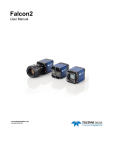

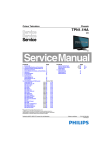

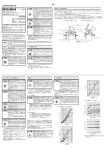

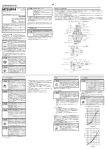
![[Competition Commission Undertaking No [ ] of 2004]](http://vs1.manualzilla.com/store/data/006010311_1-21996dba8872f587e5a78ef073ded048-150x150.png)
